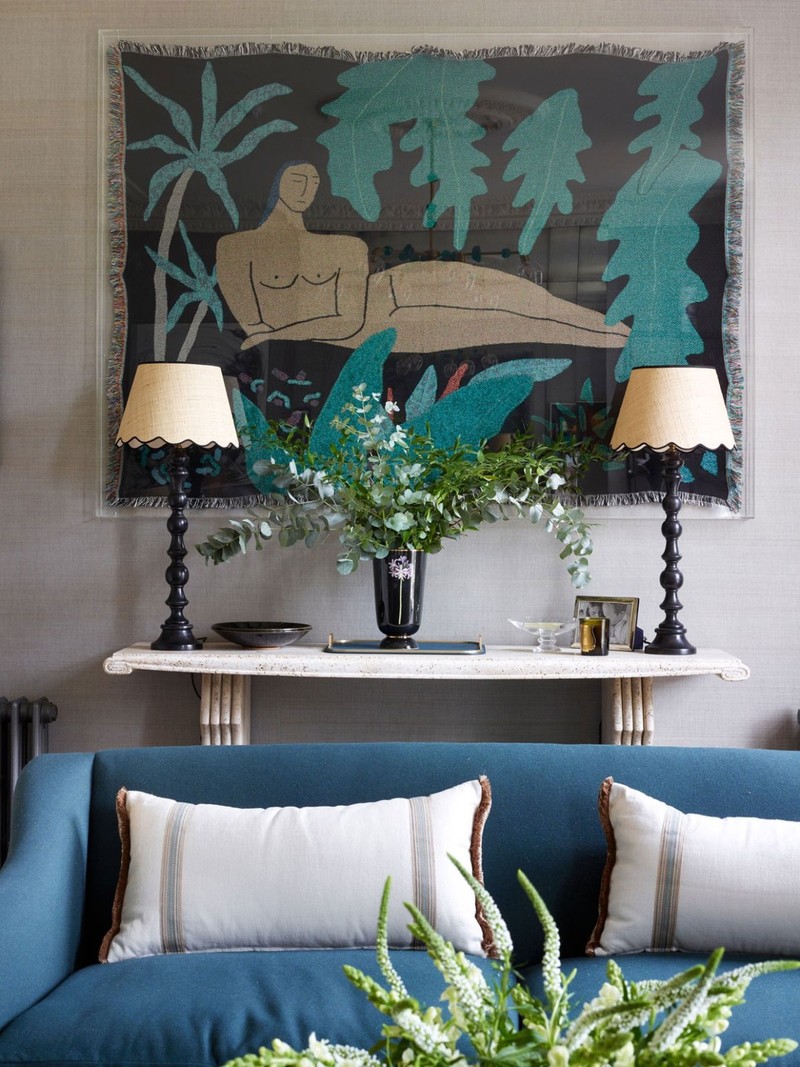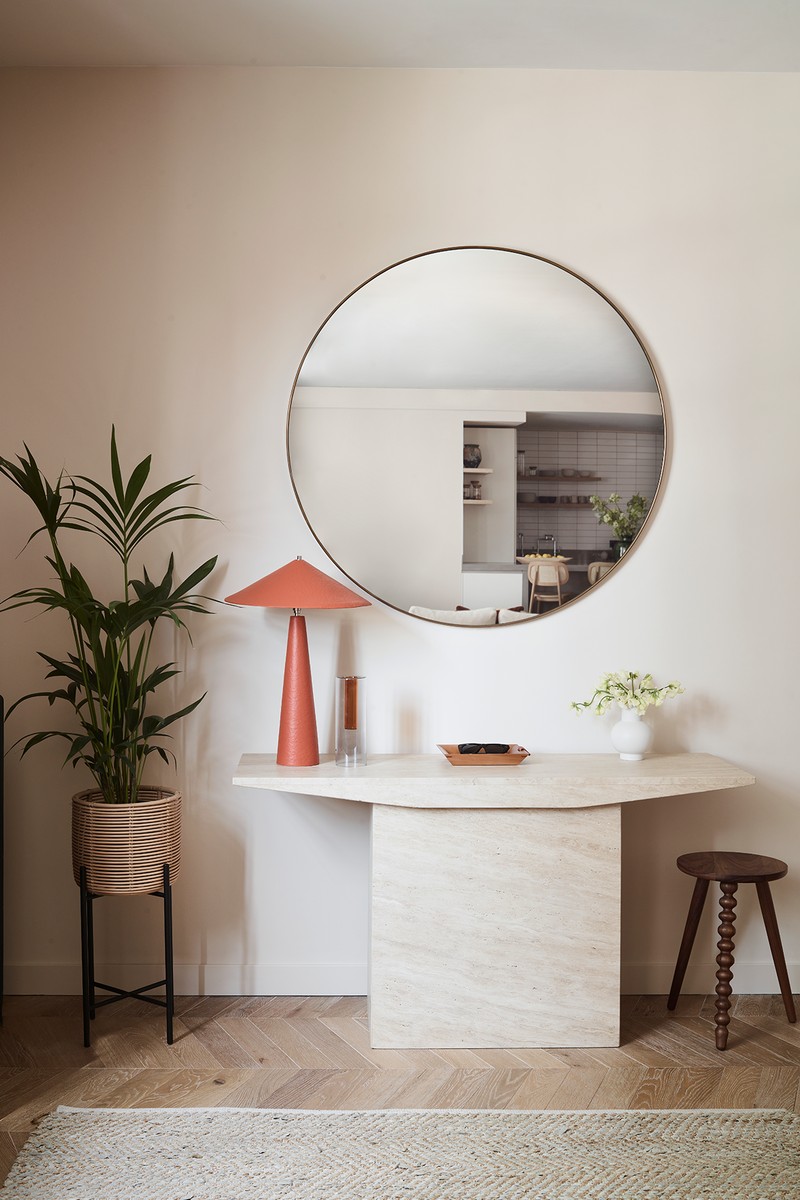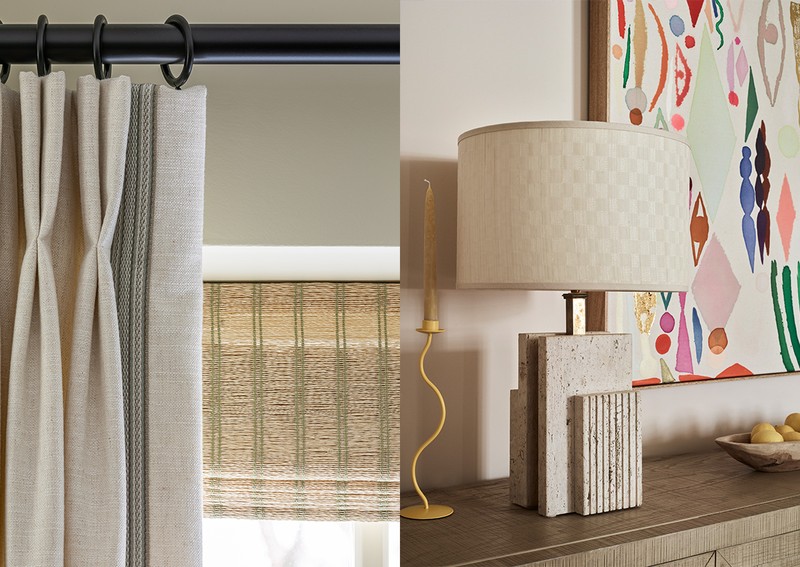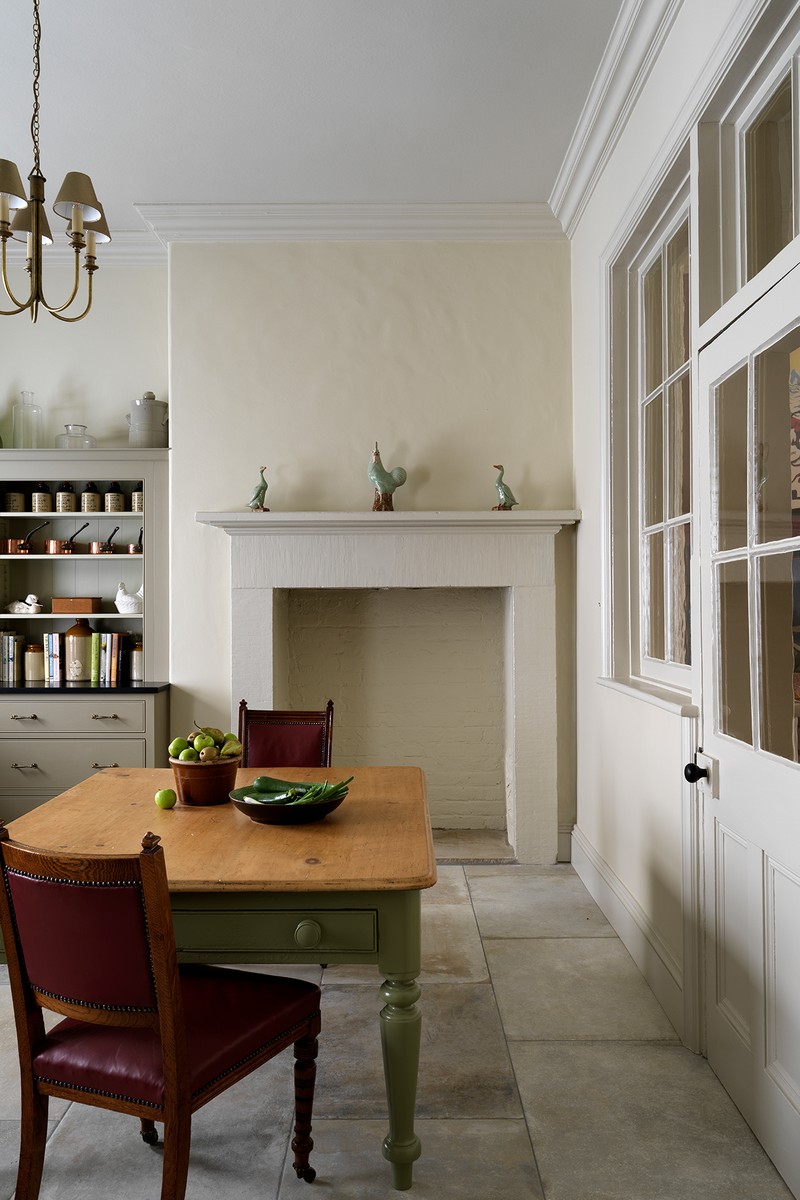How To Add More Character & Interest To Your Home
Start By Looking At The Architecture
“Always look at the architecture first. If the room is full of period features and original details, then it might be possible to pare thingsback and find some additional character within the foundations of the building.” – Alice Leigh
“It’s a good idea to think about all the hard finishes, including the floors and walls. Don’t forget the ceilings when it comes to things like panelling – you can inject relief by adding a raided and fielded panel, tongue and groove panelling or even beading. We also love using rough boarding on a ceiling, especially positioned in the centre of a coffer to highlight the pitch.” – Emma Sims Hilditch
Integrate Some Period Details
“If your home lacks or has had elements of architectural interest removed, it’s important to add them back in. This could be done via an applied moulding through a wall to create a panelled effect. Ceiling roses and cornices also elevate the grandeur of a room, while pediments above doors can be quite typical of stately homes; where there is volume and space to do this, it is a really fun detail to add.” – Emma
“But it really depends on your space. I wouldn’t personally add period mouldings to a new build space as it feels out of context. I think architectural details should reflect the period of the home and certainly re-introduced if they have been taken away. However, in a modern home, architectural details can be achieved with contrasting colours, textures on the wall like a grass paper or cladding with brick slips, all of which can add character but still look right in that setting.” – Alice
Use Lighting To Create More Atmosphere
“Lighting plays a huge role in adding character. It’s important to think about a properly planned lighting scheme to create warmth with different layers and levels. I mix it up with floor lamps, table lamps, wall lights and pendants, with the additional occasional uplighter, behind a plant for example, to create a more ambiance. If you are starting out on a project, put your main living area lamps on 5amp circuits so you can control them from the wall and always on dimmers. There has been a big uptick in demand recently for cordless rechargeable lamps, which are brilliant – not only for the garden but for areas of the home where you can’t access a plug socket. Finally, spotlights play their part but I like to restrict them to kitchen and bathrooms or awkward areas only.” – Alice
“We love to position spotlights on a slight diagonal in front of windows so that when the curtains are drawn, they illuminate the fabric. Try to use up lights and downlights to highlight different architectural features, such as fireplaces, soft arched openings and staircases.” – Emma
Enhance A Space With Different Focal Points
“Focal points tend to be around fireplaces, views out to the garden or central pendant fittings. However, if these things don’t exist in your space, then a statement piece of furniture cleverly positioned can also create a focal point.” – Emma
“Typically, a focal point faces the main entrance of your living room. If the space doesn’t have an obvious focal point (i.e. a fireplace) then you can create one. Joinery is a good place to start; shelves, cupboards and cabinetry can add lots of character to a bland space, and then you can add layers in contrasting paint colours or create a faux fireplace with a stone or plaster fire surround. Contrasting beams on the ceiling can also act as a great focal point, making the room feel bigger by drawing the eye up. Artwork can also be a wonderful focal point – either a gallery wall or just a bold and beautiful picture.” – Alice
Incorporate Different Textures
“Mixing textures is a brilliant way to add character. If you have a specific colour palette you are using, then you can add interest by layering different textures of the same tone. Velvet offers good contrast to both linen and wool, for example. When it comes to furniture, it’s all about balance; I might mix a piece of lacquer with an old antique item or a stone with a lovely wood. For me, it’s all about considered contrasts that complement one another. I also like to use textured wall hangings; they give the room such a cosy feel and I love their three-dimensional value.” – Alice
“We like to add soft textures such as wool carpet with a rib, textural rugs or knitted and velvet cushions. Mixing different materials helps create personality. We love to use natural leathers, gnarled brass, textural linens, and other soft furnishings. Even paint finishes, such as a rendered plaster and lime wash on top, can create a softer effect than a plastered and painted wall.” – Emma
Use Colour In A Clever Way
“Painting a ceiling in a dark colour is a fun way to play with atmosphere. We also like to use fabric on the walls. A company called Fabritrak makes this very easy to do.” – Emma
Focus On Cohesive Spaces
“There needs to be a common thread running throughout a scheme. I also like there to be a principal colour palette to start with, which I then layer with different textures and small accent colours. This is especially relevant in a house with an open floor plan. The challenge of more open plan living is to give each room or space its own identity while achieving a feeling of unity. This can be done by repeating colour threads, materials or details in fabrics and linking the spaces together.” – Alice
“Always look at a home holistically – you want to be able to transition from one room to another without feeling like you’ve left a space. Each room should feel like a continuation of the other as you move seamlessly throughout the home. We often use the same flooring in different laying patterns so there’s a limited palette of materials and complimentary colour palettes, but still some individuality in each space.” – Emma
Choose Flooring Carefully
“Flooring should be considered in each space based on the rooms that are most in use. Entrance halls always feel more formal when laid with stone, reception rooms should enjoy the warmth of timber, while carpets are soft underfoot in bedrooms. For back of house spaces, where muddy footprints or water may impact the surface of the material, a more durable porcelain may feel more appropriate.” – Emma
“I love how a rug can really add character in so many ways, creating zones and bringing a decorative element to a scheme. If I’ve used lots of pattern in the design, I like to use a plainer rug with interesting textural qualities; if the scheme is quite neutral, then it’s fun to go for something bolder; it’s all about balance. Where I can, I like to use mid-century Swedish flatware rugs, which have so much character to them and can feel really modern thanks to their geometric shapes.” – Alice
Get Creative With Wallcoverings
“I like to use textured wallpapers (i.e. grass papers and linens) in a lot of projects, as I like the warmth they can bring to a room, especially when you don’t want an overbearing pattern but still want to add some character.” – Alice
“We love to see the continuation of wallpaper onto ceiling spaces. We also love using wallpaper on joinery, whether as the backdrop to a library or to wallpaper the panels of the front of the wardrobe to tie into the rest of the bedroom together.” – Emma
Add In Some Natural Elements
“We are huge believers in natural materials, and these can come in a variety of surfaces, textures, and be used for many purposes – such as timber boarding on a ceiling, a pitted stone floor, or a soft wool to line your windows. We also love using indoor plants in rooms that are connected to the garden. Plants introduce a feeling of wellbeing and help to purify the air in our homes.” – Emma
“I agree about plants. They add huge character to a space and really pull it together – especially in blander areas. Just remember – the more oversized the better, with large and interesting planters.” – Alice
Use Artwork To Your Advantage
“Artwork is personal – whether it’s an abstract piece of modern art or a landscape of a favourite holiday destination, or even a particular love of an artist, all artwork adds personality and a sense of home. Accessories and decorative objects are also the final step in making an interior feel finished. These can include decorative sculptures, yards of books and family photos.” – Emma
“It’s wonderful if the client has an existing art collection to work with but equally, it can also be fun finding suitable pieces towards the end of the process. Don’t stick with one genre – mix the old family portraits or heirlooms with something more modern, and try not to be contrived but select pieces you really love. It doesn’t have to be expensive – I often find great prints in gallery shops. Equally, finding interesting ways to frame art and textiles can be a fun way to add more character. For example, we once framed a rug in Perspex which added an interesting touch to what was a fairly formal room. If you don’t have the time to source pieces yourself or don’t know where to start, it can be useful to engage with an art agent. Give them your budget and they can come up with some options. Grandy Art and Mylo Art are my go tos.” – Alice
Add Vintage Pieces
“Every room should have a piece of vintage or antique furniture in it for depth and authenticity. Examples could include furnishing an entrance hall with an antique console table, using an old farmhouse table in a kitchen or repurposing an antique console table or commode as a wash basin.” – Emma
“Incorporating antique and vintage elements to any home is all about balance and scale – and finding the right amount of imperfection. For a modern home, I would look at iconic mid-century pieces and simpler designs from the Arts & Crafts period. I don’t like to use overly ornate or heavy items as they can look awkward in modern spaces. It's easy these days to pick up antiques online; just remember to have a conversation with the dealer, ask questions, evaluate the condition of the piece and get them to send more photos if needed. Fairs like Kempton and Ardingly are also brilliant for picking up a bargain.” – Alice
Show Off Your Personality
“Injecting personal touches is key to completing a project; this could be anything from family photos, special mementos from your travels, something handmade and any little touches which have some meaning or sentiment behind them. Books also play a big part in reflecting your interests and passions and add another layer to a characterful home. A good mixture of these on a shelf or a coffee table is a great way to create a personalised space.” – Alice
Visit SimsHilditch.com & AliceLeigh.co.uk.
DISCLAIMER: We endeavour to always credit the correct original source of every image we use. If you think a credit may be incorrect, please contact us at info@sheerluxe.com.



/https%3A%2F%2Fsheerluxe.com%2Fsites%2Fsheerluxe%2Ffiles%2Farticles%2F2023%2F06%2Fcharacter-home-3.png?itok=V1vCBgii)
/https%3A%2F%2Fsheerluxe.com%2Fsites%2Fsheerluxe%2Ffiles%2Farticles%2F2023%2F06%2Fcharacter-home-4_0.png?itok=f3sgLGw1)


